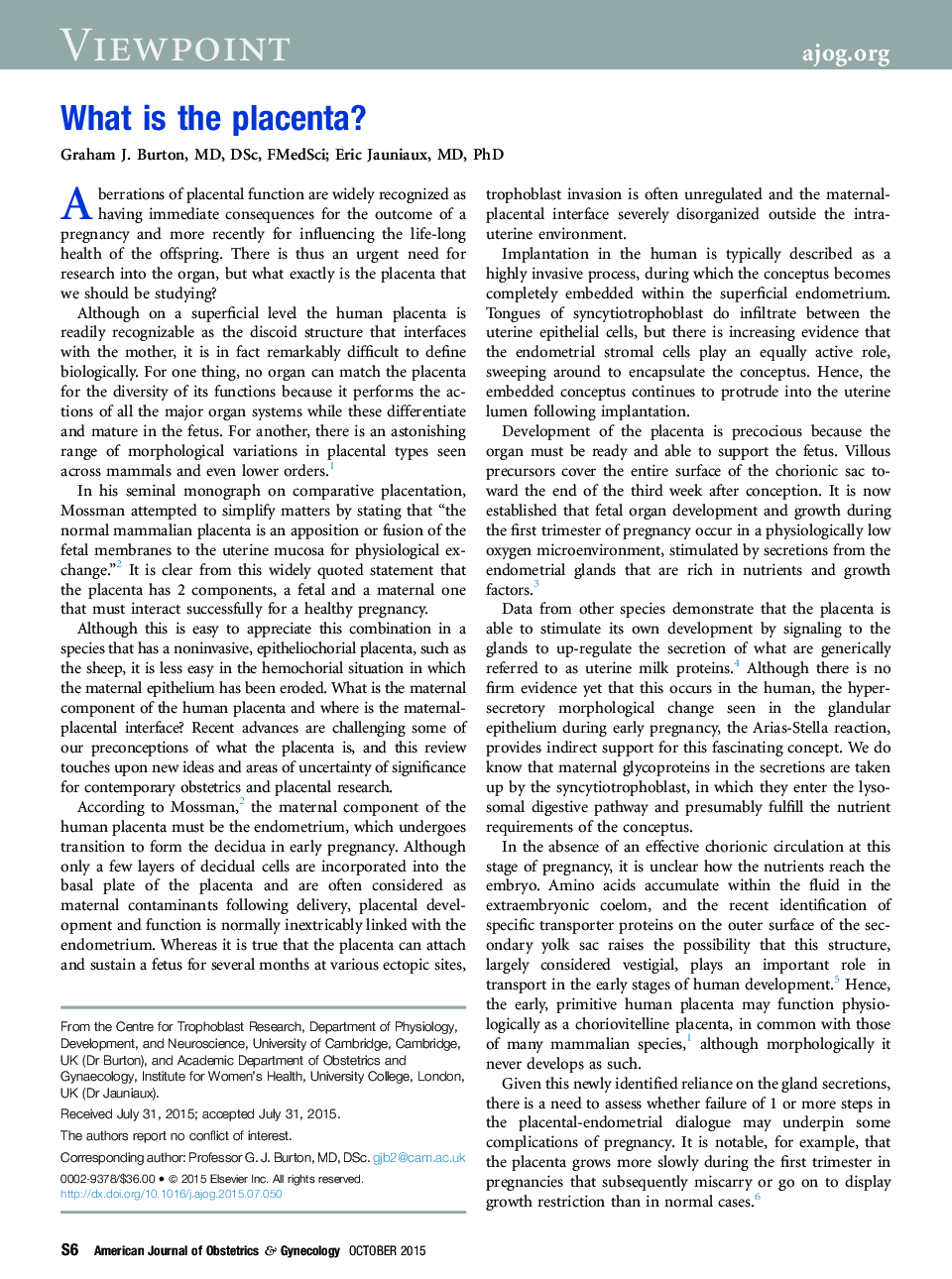| کد مقاله | کد نشریه | سال انتشار | مقاله انگلیسی | نسخه تمام متن |
|---|---|---|---|---|
| 3432702 | 1594901 | 2015 | 4 صفحه PDF | دانلود رایگان |
عنوان انگلیسی مقاله ISI
What is the placenta?
ترجمه فارسی عنوان
جفت چیست؟
دانلود مقاله + سفارش ترجمه
دانلود مقاله ISI انگلیسی
رایگان برای ایرانیان
کلمات کلیدی
موضوعات مرتبط
علوم پزشکی و سلامت
پزشکی و دندانپزشکی
پزشکی و دندانپزشکی (عمومی)
چکیده انگلیسی
Discarded at birth, the placenta is a highly complex and fascinating organ. During the course of a pregnancy, it acts as the lungs, gut, kidneys, and liver of the fetus. The placenta also has major endocrine actions that modulate maternal physiology and metabolism and provides a safe and protective milieu in which the fetus can develop. The human placenta undergoes dramatic transformations in form and function between the first trimester, when organogenesis occurs, and the remainder of pregnancy that reflect evolutionary responses to changing oxygen concentrations in the earth's atmosphere. Recent research indicates a more interactive dialogue between the placenta and the maternal tissues than previously recognized. The endometrial glands provide histotrophic support during the first weeks of pregnancy, and the placenta appears able to stimulate its own development by up-regulating gland activity in response to endocrine signals. Extravillous trophoblast cells migrate from the placenta into the uterine wall, in which they interact with cells of the maternal innate immune system. These interactions have a physiological, rather than a classical immunological, outcome and most probably mediate remodeling of the uterine spiral arteries that supply the placenta. Furthermore, deportation of aggregates of transcriptionally active trophoblast nuclei, and the release of exosomes carrying microribonucleic acids challenge our perceptions of fetal-maternal signaling and where the placental interface actually lies. Here we reconsider definitions of the placenta in the light of these recent advances.
ناشر
Database: Elsevier - ScienceDirect (ساینس دایرکت)
Journal: American Journal of Obstetrics and Gynecology - Volume 213, Issue 4, Supplement, October 2015, Pages S6.e1-S6.e4
Journal: American Journal of Obstetrics and Gynecology - Volume 213, Issue 4, Supplement, October 2015, Pages S6.e1-S6.e4
نویسندگان
Graham J. MD, DSc, FMedSci, Eric MD, PhD,
